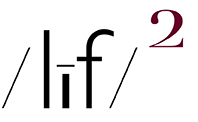Ryuku Isalnds, Okinawa, Japan ~ c. 1967 (embiggenable)
Ryuku Isalnds, Okinawa, Japan ~ c. 1967 (embiggenable)
Ryuku Isalnds, Okinawa, Japan ~ c. 1967 (embiggenable)
1966-68 I LIVED IN JAPAN, A LIFE EVENT that changed / shaped my life inasmuch as it was the place (and culture) in which I discovered the medium of photography and its (Eastern) apparatus….
BACKGROUND:….In early 1966 I gave up on college and by June of that year I was swept up by Uncle Sam in the troop build-up for the Vietnam War. As luck and a spin of the wheel would have it, after basic training I was sent to supply clerk training-not infantry training!-after which I was sent to Okinawa, Japan-not Vietnam!
Within 2-3 hours of my arrival, I encountered yet another bit of good luck (although I did not fully appreciate it at the time); in its infinite wisdom, the US Army-noting some drafting experience on my civilian record-told me to forget all that supply clerk stuff cuz I was gonna be a draftsman assigned to a command headquarters company. A company which was barracked in a little enclave positioned 8 miles from the main base, a place which was, for all intents and purposes, out of the sight and mind of command oversight. A situation which was finagled by the company commander who was just killing time while waiting to be discharged.
As a result of that situation, and the fact that most of the company’s ranks were working in a wide a variety of tasks and different locations, we were not subject to typical military rituals. We basically had 8-5 / 5 days a week jobs and, as long has you showed up to work and did your job, we were free do just about anything we desired. In fact, quite a number of our ranks lived “downtown”, shacked-up with a local “sweetheart”.
Re: Photography: Finding myself in a foreign country / culture, it made sense to buy a camera. And, duh, there were camera stores galore, seemingly on every street corner. So, I got me a Petri fixed lens rangefinder camera and within a couple weeks I was processing all my film, color transparency and bw, and making bw prints in the well equipped recreational base photo lab. Photography wise, I was off and running….
….fast forward to early-1967 - by this time, after learning I could go home, get married, return to Okinawa with my (then) wife and live off-base (with a housing and food allowance), my army life became even more 8-5 / 5 days a week job like. Life was sweet and I was making lots of pictures until…
….I had entered 3 pictures (in 3 different categories) in US Army’s worldwide photo competition. All 3 won in their category and continued to move on up the competition ladder until they reached the top, aka” final, level where my run came to an end. Having only been making pictures for about 6 months, I was pretty pleased with myself and started to think that, maybe, just maybe, there might be a future for me in this picture making thing. Little did I know…
…a few weeks later-after collecting my winning booty from the theater commanding general in a big tadoo-as I was sitting at my drafting table, word filtered down the chain of command that the Command Information Office photographer was rotating back to the States and there was no replacement in sight. I immediately raised my hand and said, “I’ll do it.” and, due my recent photo competition success, I became an “official” US Army photographer.
And the rest, as they say, is history.
All of that written, I must write that I took to making pictures like a duck to water. Ya know, like, I don’t need no stinkin’ training (my lack of education hasn’t hurt me none cuz I can read see the writing pictures on the wall). It all seemed to just come “naturally.” How else, do you explain the fact that, within a little over 6 months from picking up a camera for the first time, I was making my living, so to write, making pictures? Not to mention how ironic it was to have traveled half way around the world, after growing up in Rochester, NY within sight of KODAK headquarters, to discover the joy photography.
Ain’t life strange.
